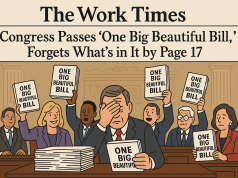In an age where geographical boundaries seem increasingly permeable, the steady march of globalization has presented nations with both unparalleled opportunities and unprecedented challenges. At the heart of this transformation is a critical balancing act for governments trying to maintain sovereignty while engaging in the complex interdependencies that define our current global landscape.
As domestic policies are inevitably shaped by global economic, social, and political forces, governments find themselves in a delicate dance with globalization. This interaction is most palpably felt in the realms of regulatory frameworks, public sector management, labor laws, and social welfare systems. Each of these elements faces the push-and-pull of international influence and internal priorities, creating a dynamic environment where policy-making is as much about international relations as it is about national interest.
Take, for instance, the regulatory frameworks that govern trade and commerce. With the advent of multinational treaties and alliances, domestic industries must adapt to not only home-grown regulatory standards but also to the rules set forth by international bodies. This can lead to tensions where local businesses might feel stifled by regulations designed to meet global standards, while not necessarily serving their immediate context.
In the sphere of public sector management, the narrative is woven with the threads of efficiency, transparency, and accountability, ideals that are often championed by international organizations. As governments strive to reform and revitalize their bureaucratic structures, they are frequently guided or even pressured by global best practices and benchmarks, which can sometimes be at odds with indigenous administrative traditions or realities.
Labor laws too are undergoing rapid transformation in the face of global pressures. The rights of workers, the conditions of employment, and the nature of work itself are being interrogated and redefined in a global marketplace. Here, governments must navigate a path that protects their citizens’ rights while ensuring that their labor market remains competitive internationally.
Finally, social welfare systems reflect perhaps the most direct impact on the citizenry, as governments grapple with the need to provide safety nets while balancing budgets that are increasingly affected by global financial tides. The influence of international financial institutions and aid organizations in shaping welfare policies is a testimony to the interconnectedness of global governance and domestic policy-making.
Through a series of case studies, this discussion has sought to illuminate the various ways globalization has reshaped government policy on the domestic stage. As we stand at the crossroads of sovereignty and interdependence, the journey forward entails a conscientious evaluation of how we can align national priorities with global responsibilities. The ultimate question remains: Can globalization’s trajectory be harmonized with sustainable, equitable policy-making that empowers the local while engaging the global? And more importantly, how can the public sector evolve to meet the demands of an increasingly integrated but diverse world order?
As readers hailing from prestigious platforms like the Washington Post, The New Yorker, and The New York Times, you understand the importance of in-depth analysis and nuanced discourse. We hope this exploration has sparked your interest and encouraged a deeper conversation on the future of governance in a globalized world.




























